Tree Trail
The Tree Trail had been developed by the Friends of Belfast Botanic Gardens to highlight a few of the 500 or so trees in the Botanic Gardens. There are over 100 species of tree in the Belfast Botanic Gardens collection. This trail takes you past a few of the outstanding specimens.
Start the trail at the Malone Road gate by the statue of Lord Kelvin and follow the numbers on the plan. All of the trees on the trail are described and illustrated in detail in the main tree section of the website

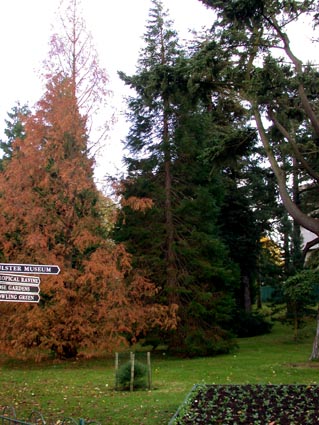
(1)
Three redwoods, the dawn redwood (Metasequoia, from China) with flattened fronds that drop in winter. The coastal redwood (Sequoia, USA) has similar leaves but is evergreen and is clothed in shoots at the base of the trunk. The giant redwood (Sequoiadendron, USA) has scale-like leaves.

(2)
Picea breweriana
A young tree of Brewer’s weeping spruce, , a rare species in the wild from western USA. Discovered in 1897 and given an RHS award of merit in 1984.
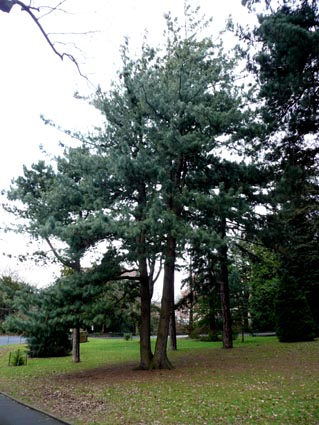
(3)
Pinus wallichiana Bhutan pine.
You can pick this out from the other pines nearby as it has twin stems.This species has distinctive very fine pendulous needles with a bluish colour that are in bunches of 5. It also has very large cones.
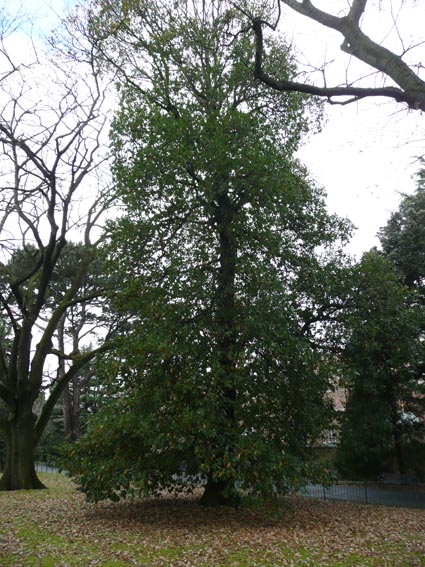
(4)
Quercus canariensis Mirbeck oak.
This is one of the evergreen oaks. In summer the bright green new leaves make a striking contrast to the dark leathery old leaves. It comes from Spain and Algeria (in spite of the species name). It is seldom seen in the UK. This is a fine example.
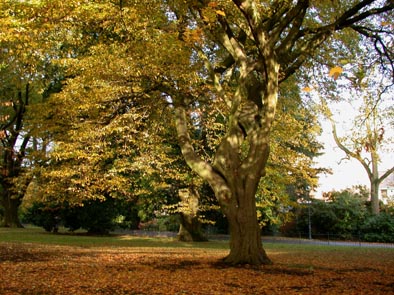
(5)
Carpinus betulus ‘Asplenifolius’. This is a rare cut-leaf variety of the common hornbeam. Notice how some of the branches have grafted together. This is known as inosculation.
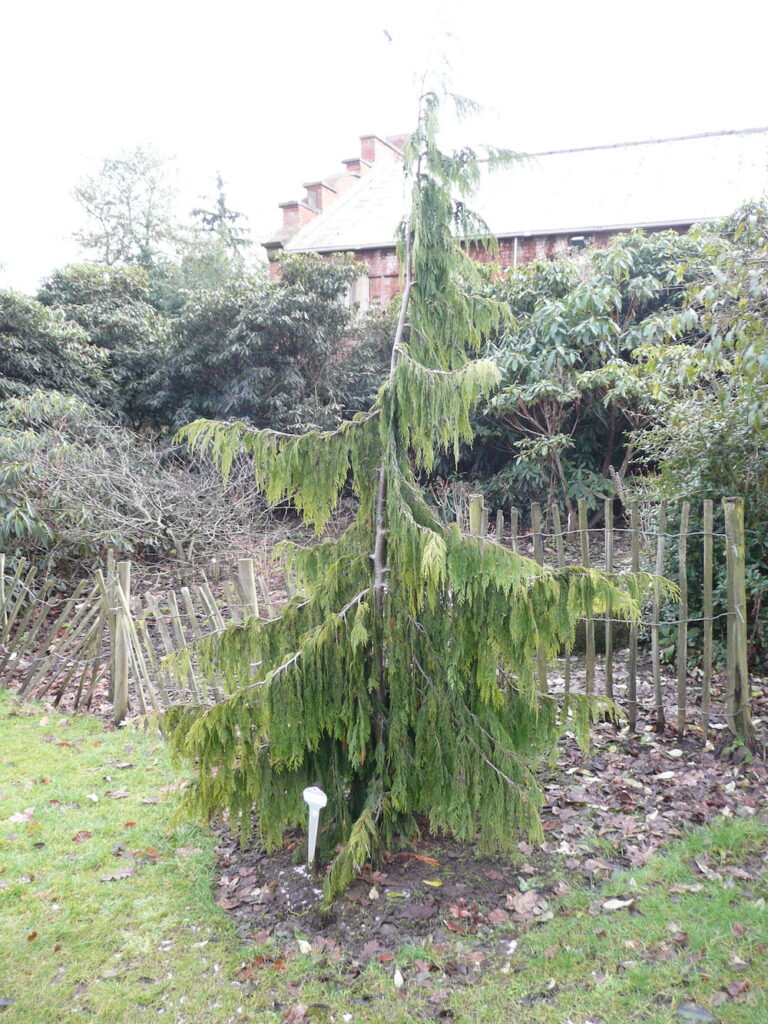
(6)
Callitropsis nootkatensis Afghan hound tree. A fine rare tree occurring from S. Alaska to NW. California that was introduced into cultivation in 1884. This young example is already producing cones and should eventually reach about 25m.
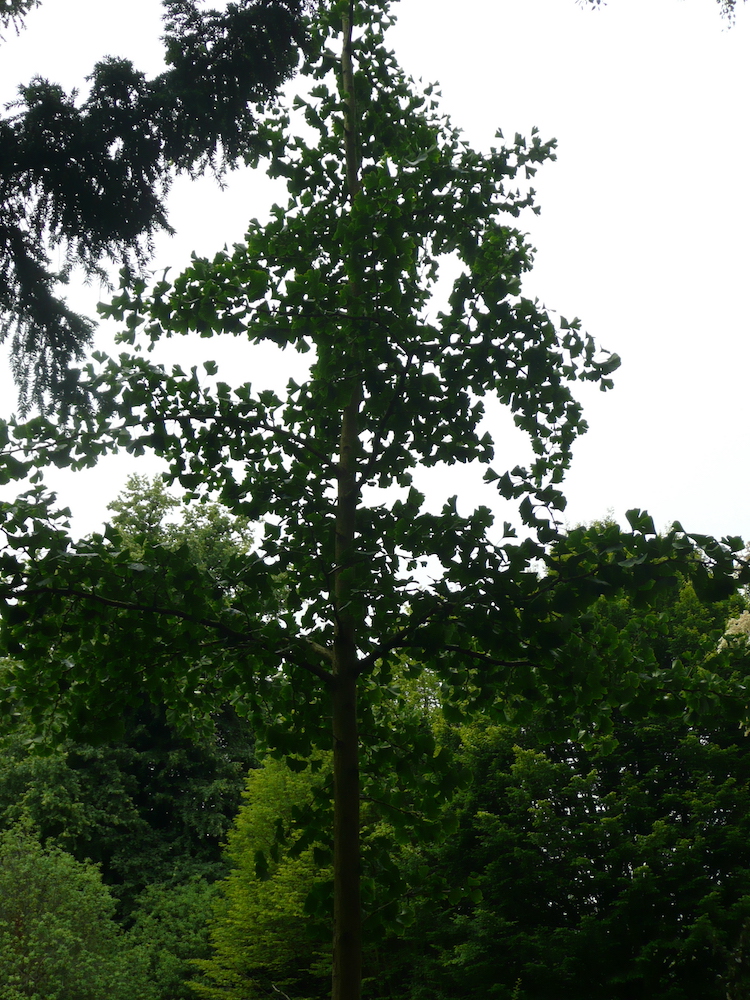
(7)
Ginkgo biloba Maidenhair tree.
The ginkgo is a unique species with no living relatives. Other members of the Ginkgoales order were growing in the Permian 270 million years ago. It has separate male and female trees. The female trees produce sticky (and smelly) seed coats that are used in Chinese medicine. The tree is in the Global Medicine Garden
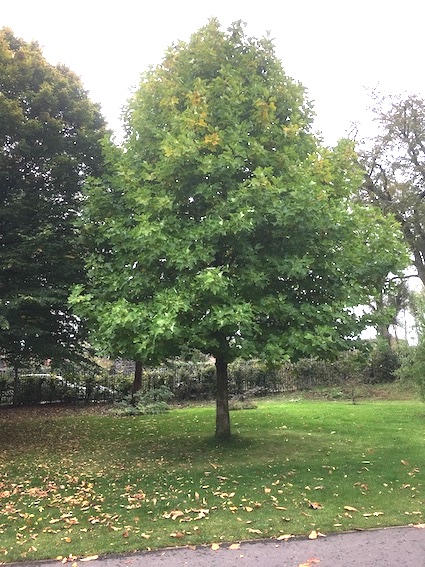
(8)
Liriodendron tulipifera Tulip tree
This fast-growing North American forest tree can reach 165 ft (50m ). It is a member of the Magnolia family, one of the most primitive groups of flowering plants. The flowers are tulip-shaped and usually yellow with a tinge of pink. The distinctive leaves look as if their ends have been cut off. This tree was planted in 2018.
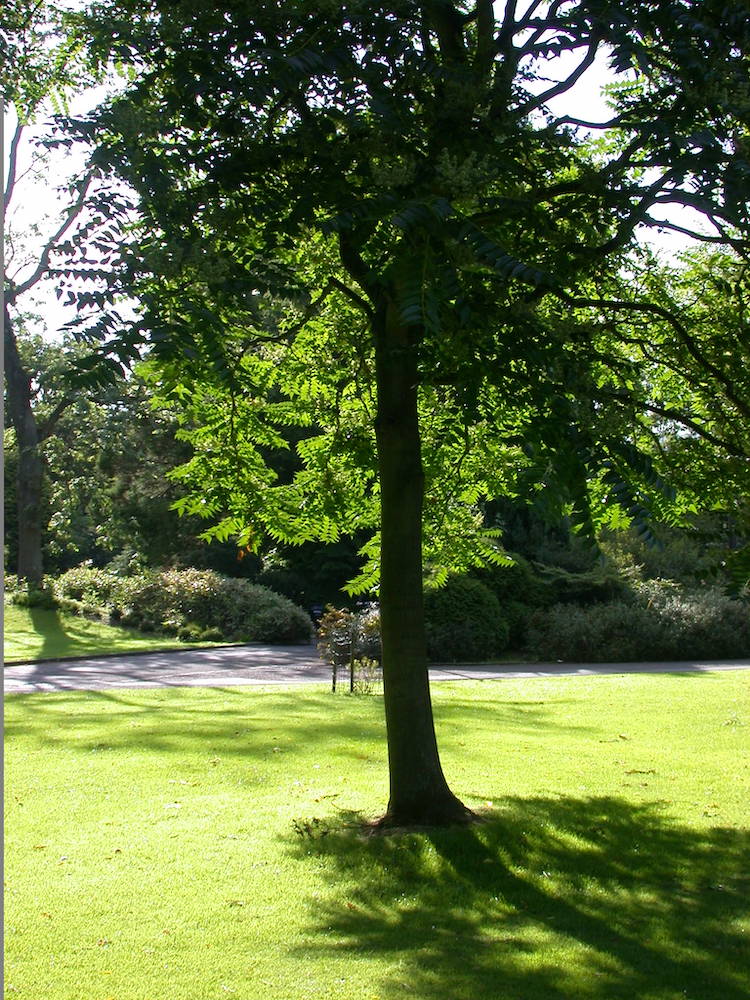
(9)
Ailanthus altissima
This young Tree of Heaven was planted in the 1970s and now flowers prolifically. Attractive when young, this is not a tree for a small garden as it can reach 28m height. It can spread from suckers which may extend up to 30m from the parent tree. In the UK it does not set viable seed (yet!), but in warmer climates it can become an invasive problem by seeding. It had compound leaves like walnut which can also be seen nearby.
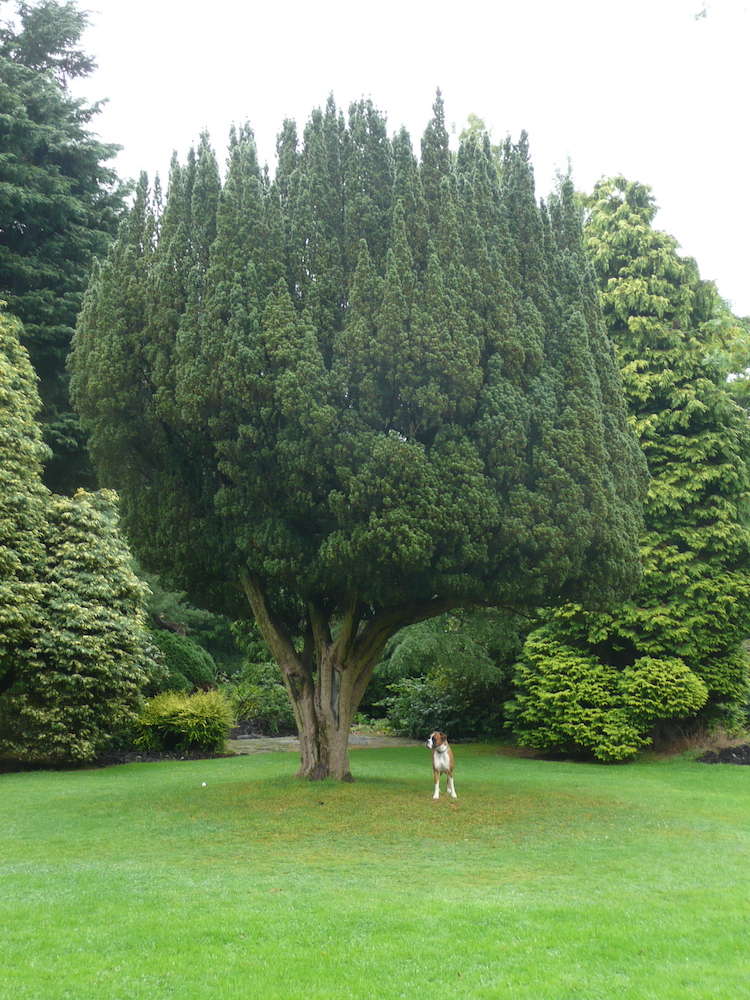
(10)
Taxus baccata ‘Fastigiata’ Irish Yew
It was in the limestone area near the Marble Arch caves in Fermanagh, that two unusual yews with an upright or fastigiate shape were found in 1780. They were transplanted to the Florencecourt estate a few miles away where one survived and was named the Irish Yew. The original tree still grows there and the Irish yews cultivated all over the world have originated from this plant. Several golden forms have arisen in cultivation.
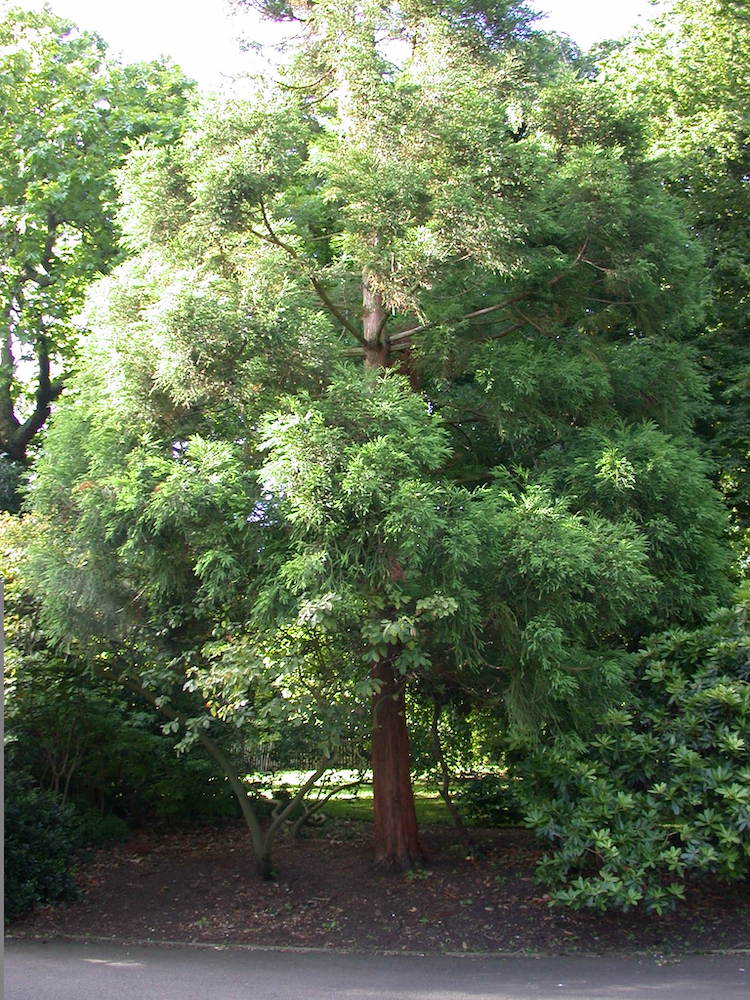
(11)
Cryptomeria japonica Japanese cedar
It is a handsome fast-growing large columnar tree with reddish-brown shedding bark and distinctive foliage. The foliage is the main clue to identification; the only similar foliage is that of the giant sequoia (Sequoiadendron giganteum) whose leaves are less long and more grey-green than the looser awl-shaped needles of Cryptomeria.
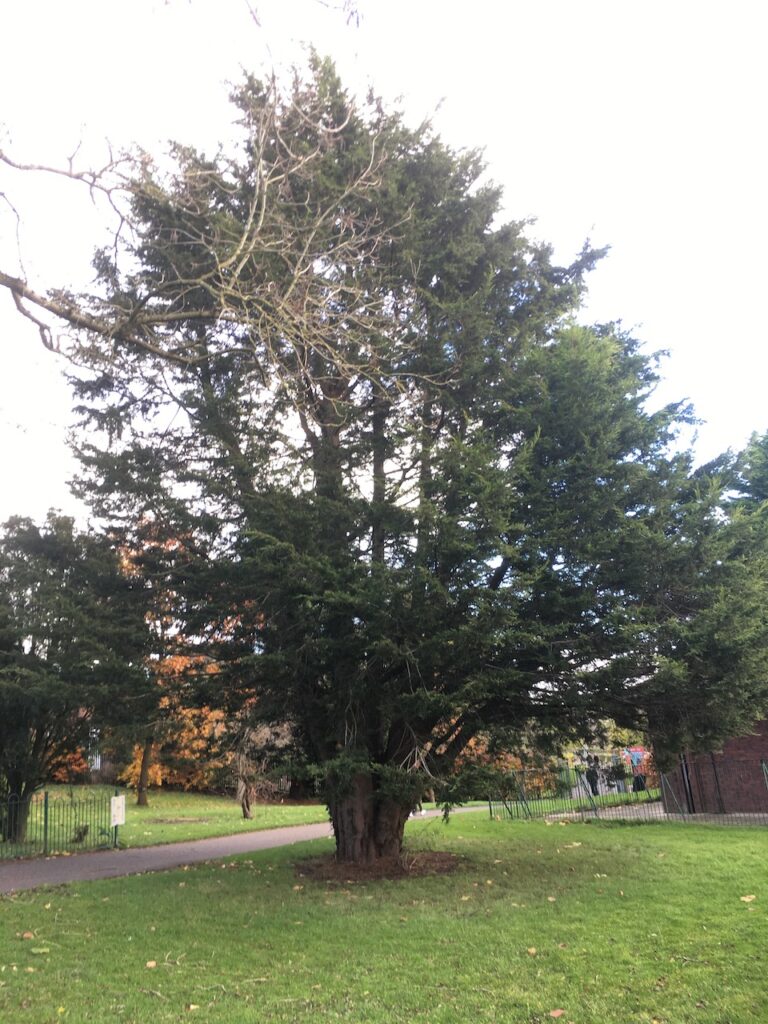
(12)
Hesperocyparis macrocarpa
The Monterey cypress, previously Cupressus macrocarpa, is quite rare in the wild, being known only from two coastal cliff-tops near Monterey in California. It is widely grown in temperate areas all over the world, particularly in coastal areas as it is salt-tolerant. It is a useful wind-break tree, but not suitable for hedging or for small gardens as it can reach 40m tall.

(13)
Pinus nigra Austrian pine
The Austrian pine is a native of Corsica to Austria and W. Asia. While not native to the British Isles, it thrives in Northern Ireland. Unfortunately the timber is not of great value.
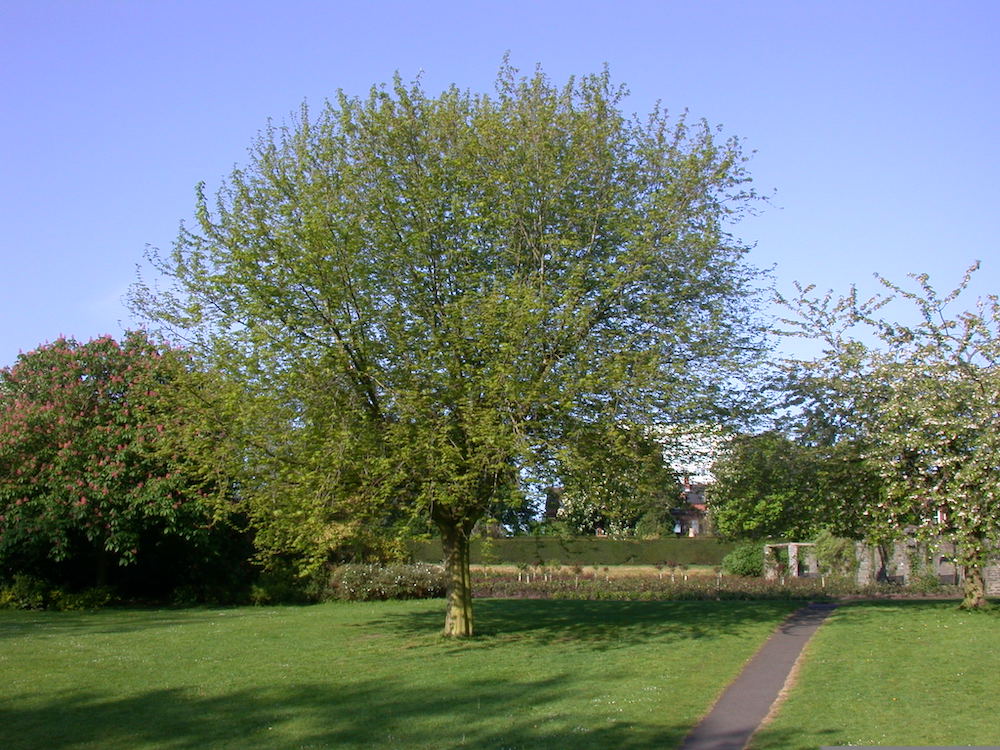
(14)
Acer saccharinum Silver maple
This large, fast growing maple, a native of eastern North America, can reach over 30m. The silver maple name relates to the silvery backs to the leaves. The flowers open before the leaves and in close-up are a dramatic red colour.
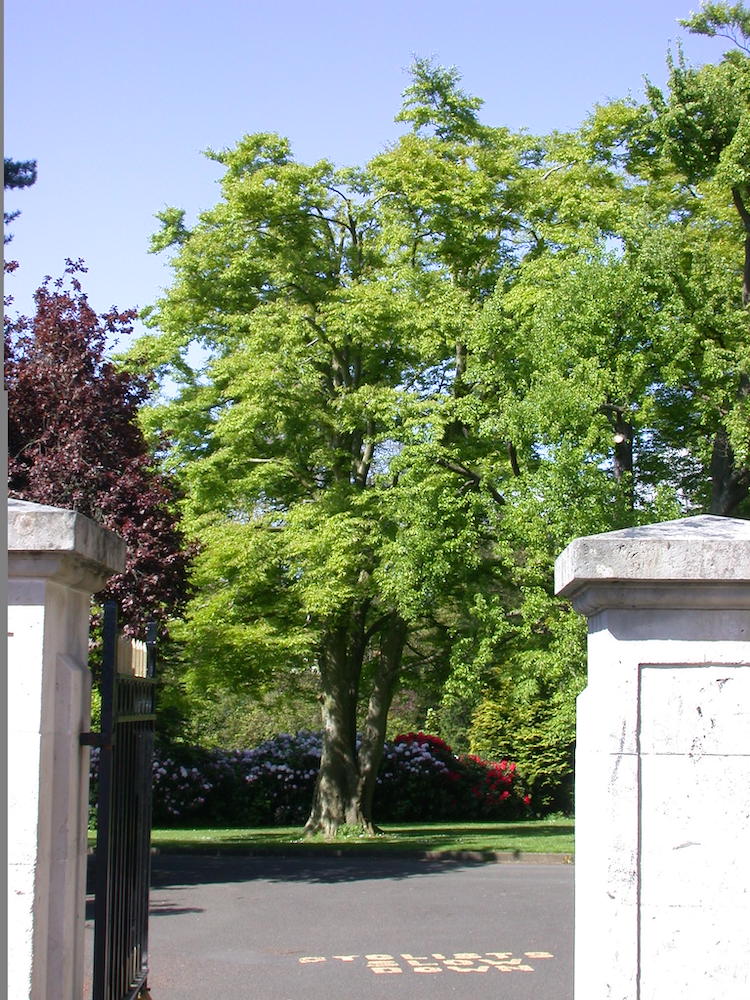
(15)
Fagus sylvatica Heterophylla group Fern-leaved beech
The fern-leaved beech is a variety or sport of the common beech. It makes a large tree to 25m as this fine example shows. The leaves are very variable, all dissected or lobed to some extent.
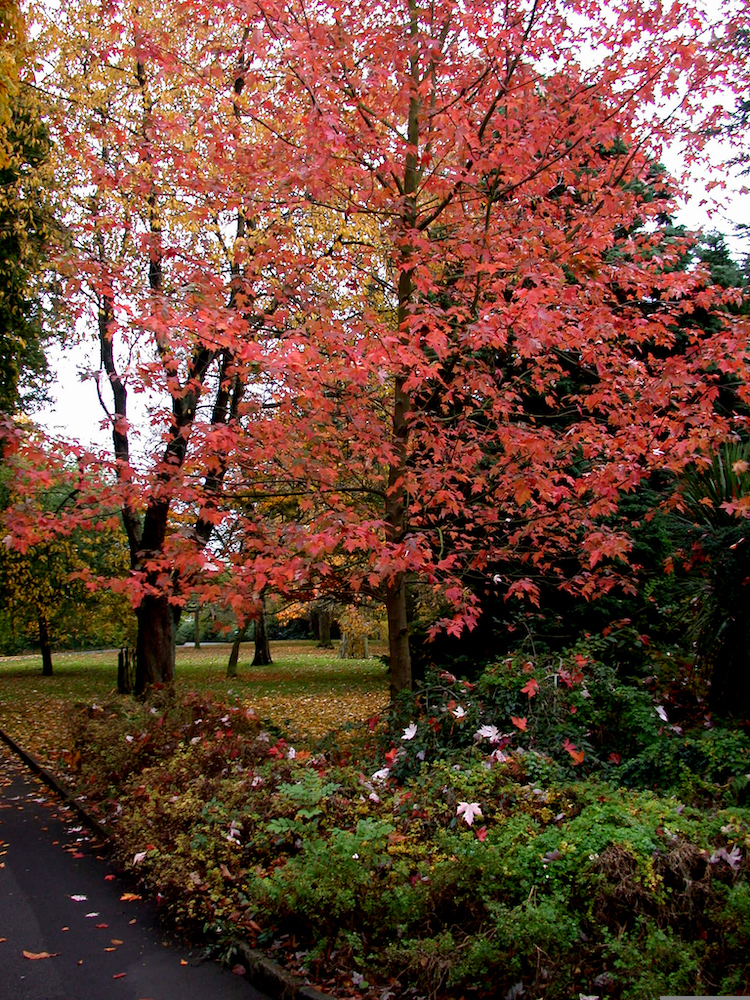
(16)
Acer freemanii ‘Autumn Fantasy’ Freeman’s maple
Acer x freemanii is a hybrid between A. rubrum and A. saccharinum, both parents being North American natives. The original tree was selected and registered by Willet Wandell in central Illinois. It makes a substantial tree up to 20m high, a narrow shape when young as in the Belfast Botanic Gardens, but more spreading as it ages.

(17)
Acer opalus Italian maple
A. opalus is native to Southern Europe. A decorative parkland tree that has a beautiful billowing effect with its branches. The sulphur yellow flowers appear at bud burst and cover the tree, creating a great splash of colour especially in the spring sun.
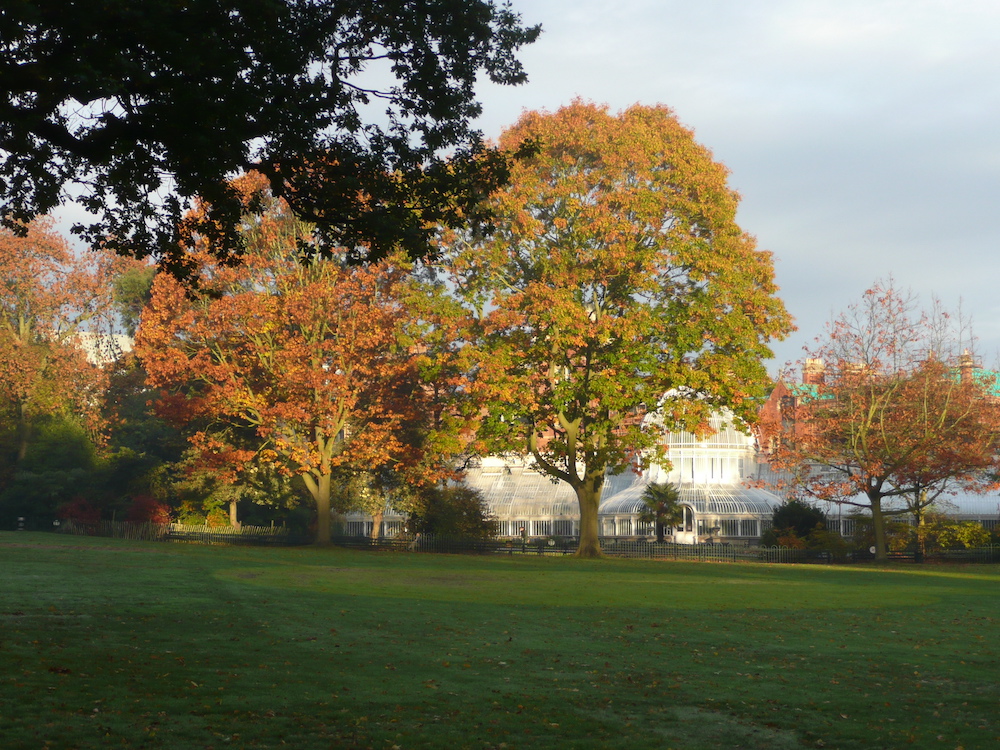
(18)
Quercus rubra red oak
The red oak is an important timber tree of the Eastern United States. It occupies the same ecological position and the same cultural significance in its area as do our native oaks in the UK. It was an important timber tree to the early settlers and is still valued for house building and furniture.
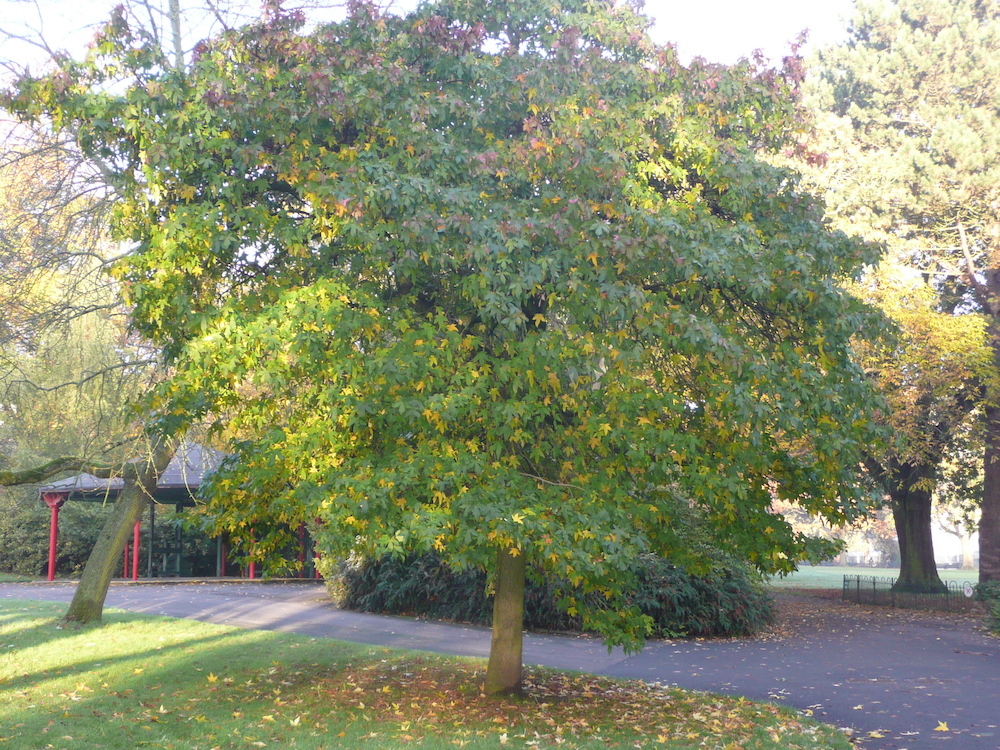
(19)
Liquidambar styraciflua Sweetgum
A New World woodland tree found in the wild from New York to Nicaragua. It is usually planted in the UK for its decorative leaves and Autumn colour. The leaves are similar to a maple and have a sweet resinous smell when crushed.
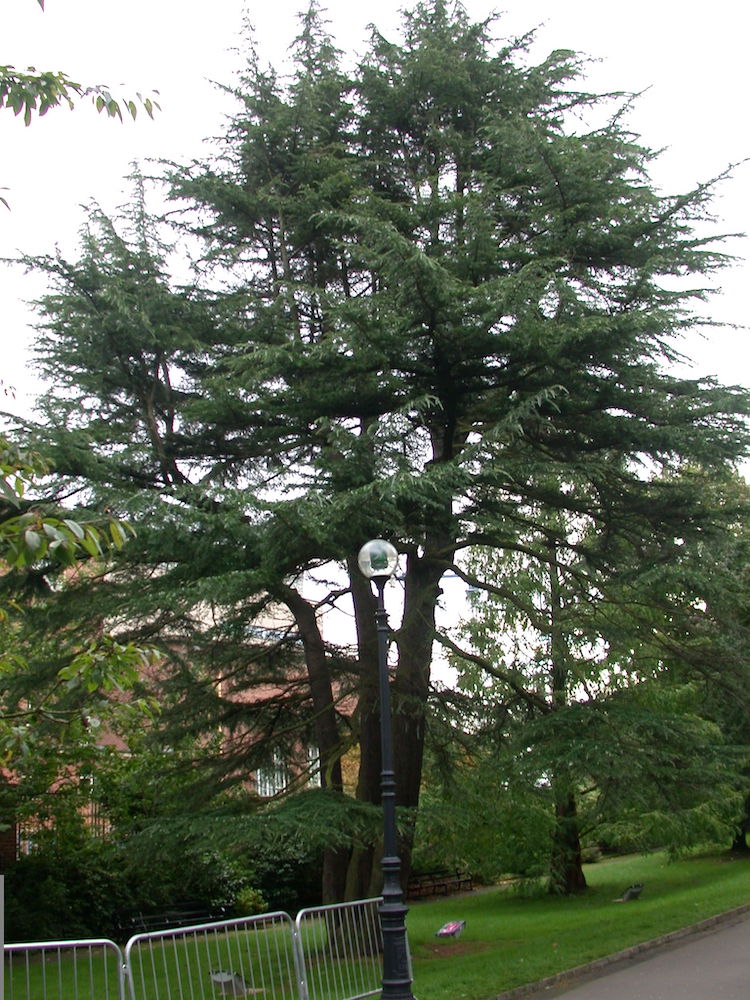
(20)
Cedrus deodara Deodar
The deodar is from the Western Himalayas. The deodar can usually be distinguished at a distance from other cedars by the drooping tips of the branches. They are evergreen not deciduous. The cones are produced in autumn and as with all cedars, the cones break up and shed their seed while still attached to the tree.
